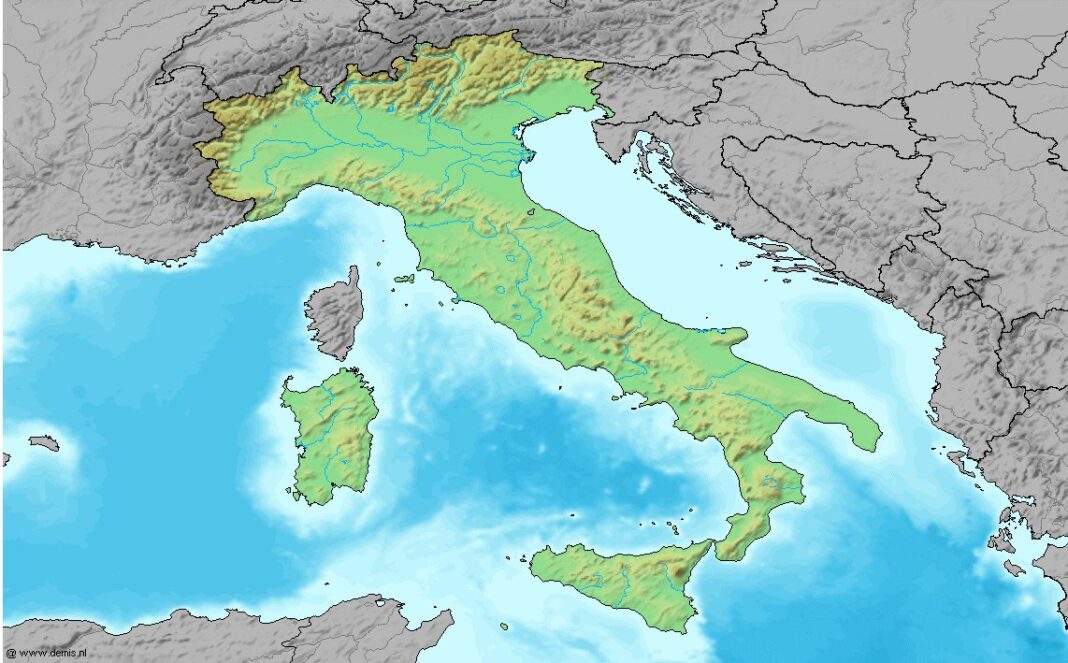Italy is a country with a rich and diverse history, shaped by the influences of many different cultures and civilizations over thousands of years. From the earliest settlements of prehistoric peoples to the heights of the Roman Empire and beyond, Italy’s past is filled with stories of triumph, tragedy, and transformation. One of the most interesting aspects of this history is the role played by the various regions that make up the country, Italy. In this article, we will delve into some of the most fascinating ancient Italian regions and explore their unique stories.
Etruria
Etruria was an ancient region that encompassed parts of modern-day Tuscany, Umbria, and Lazio. Its people, the Etruscans, developed a complex and sophisticated society that flourished from the 8th to the 3rd centuries BCE. The Etruscans were skilled artisans and metalworkers, and their art and architecture reflected a deep appreciation for beauty and craftsmanship. They were also known for their advanced engineering feats, such as their system of underground canals and tunnels that allowed them to control the flow of water and irrigate their crops. Today, the legacy of the Etruscans can be seen in the ruins of their cities, such as Tarquinia, Cerveteri, and Vulci, as well as in the many artifacts they left behind, including exquisite bronze and gold objects.
Magna Graecia
Magna Graecia, or “Greater Greece,” was the name given to the area of southern Italy that was colonized by Greek settlers in the 8th and 7th centuries BCE. These colonists established thriving cities along the coast, including Sybaris, Croton, and Taranto, that became centers of commerce and culture. The Greeks brought with them their language, art, and philosophy, which had a profound influence on the development of Italian culture. Magna Graecia was also the site of some of the most important battles of the ancient world, including the Pyrrhic War, in which the Greek general Pyrrhus fought against the Roman Republic.
Samnium
Samnium was an ancient region in central and southern Italy that was inhabited by the Samnites, a people who were known for their fierce resistance to Roman domination. The Samnites lived in the rugged Apennine Mountains, which made it difficult for invading armies to conquer their territory. Despite their isolation, the Samnites developed a complex social and political system, and their warriors were feared throughout Italy for their skill and bravery. The Samnite Wars, which lasted from the 4th to the 2nd centuries BCE, were some of the bloodiest and most protracted conflicts in Roman history.
Umbria
Umbria was an ancient region in central Italy that was known for its beautiful landscapes, including rolling hills, dense forests, and fertile valleys. It was home to many important cities, such as Perugia and Todi, that were centers of art, culture, and commerce. Umbria was also the birthplace of many famous artists, writers, and saints, including St. Francis of Assisi. The region was a popular destination for wealthy Romans seeking rest and relaxation, and it was dotted with luxurious villas and spas.
Latium
Latium was an ancient region in central Italy that was home to the city of Rome, which would go on to become the center of one of the greatest empires in human history. The Latins, the people who lived in Latium, were skilled farmers and shepherds, and their language, Latin, became the basis for many modern European languages. The region was also home to other important cities, such as Tivoli and Ostia, that played significant roles in Roman history.
Apulia
Apulia, located in the southeastern part of Italy, was a region known for its rugged terrain, rocky coastlines, and fertile plains. Its strategic location made it a key point of trade and commerce in the ancient world, and it was inhabited by many different peoples over the centuries, including Greeks, Romans, and Byzantines. Apulia was also the site of several important battles during the Roman Republic, including the Battle of Cannae in 216 BCE.
Sabina
Sabina was an ancient region in central Italy located northeast of Rome, between the Apennine Mountains and the Tiber River. Its name comes from the Sabines, a people who lived in the region and who were known for their bravery and independence. Sabina was a rural and mountainous area, characterized by its rugged terrain and dense forests. The region was also famous for its olive groves, which produced some of the finest olive oil in Italy. Today, Sabina is a popular destination for tourists seeking to explore its natural beauty and historical sites.
Bibliography
- “Etruria.” Encyclopædia Britannica. Encyclopædia Britannica, Inc., n.d. Web. 25 Feb. 2023.
- “Magna Graecia.” Encyclopædia Britannica. Encyclopædia Britannica, Inc., n.d. Web. 25 Feb. 2023.
- “Samnites.” Encyclopædia Britannica. Encyclopædia Britannica, Inc., n.d. Web. 25 Feb. 2023.
- “Umbria.” Encyclopædia Britannica. Encyclopædia Britannica, Inc., n.d. Web. 25 Feb. 2023.
- “Latium.” Encyclopædia Britannica. Encyclopædia Britannica, Inc., n.d. Web. 25 Feb. 2023.
- “Apulia.” Encyclopædia Britannica. Encyclopædia Britannica, Inc., n.d. Web. 25 Feb. 2023.
- “Sabina.” Encyclopædia Britannica. Encyclopædia Britannica, Inc., n.d. Web. 27 Feb. 2023.



 For all latest articles, follow on Google News
For all latest articles, follow on Google News